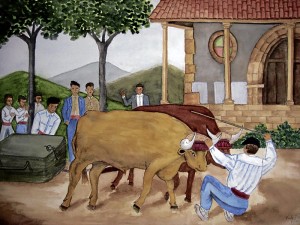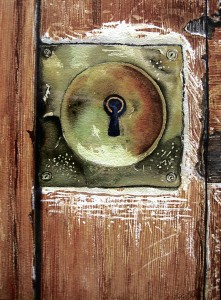
“I’m not a dumb socialite!’ declares Victoria Zubiri.
Although awarded Bon Vivant of the Year by the Philippine Tatler for her joie de vivre despite two brain surgeries, she was an accomplished fashion designer-entrepreneur, a lecturer and store consultant.
Five years ago, she started bringing culture to Metro South by establishing the Fil-Fest Cultural Foundation, which now has a regular theater season at Insular Life Auditorium in Muntinlupa.
However, Zubiri has been turning her hand to a more expressive pursuit, the art of watercolor. She started in the ’70s under master Hau Chiok and took up short courses at the San Francisco Academy of Art. She continues her studies at the Ateneo Confucius Institute of Chinese Art and Western watercolor techniques with professor Johnny Ventosa.

Dreamlike quality
Her art is not self-indulgence but rather a means to serve charitable cause, she says.
On Oct. 16, Zubiri will hold her second solo exhibit, “Point of Perspective: Inspired Moments in Chinese and Western Watercolor,” at the Manila Peninsula mezzanine. The proceeds will go to the Rayomar Outreach Foundation.
Zubiri has always been fascinated with the dreamlike quality of watercolor painting and its challenges. The painter utilizes little cakes of color to capture colorful and transparent effects with each delicately placed stroke.
Then again, it doesn’t leave much room for changes. She explains that since the paint is water-soluble, it can get runny and hard to manage. When there are mistakes, it can get messy.
As in her previous works, the subjects are part documentation of travels; studies of fruits and flowers; and table settings. She takes a romantic approach to landscape painting, looking for atmospheric scenery and picturesque places as her subjects.
Challenging herself, she attempts to capture details such as the folds of tablecloths and their exquisite embroidery through precise strokes. For a woman of a certain allure, she paints with a childlike quality.
Her work is more about vision and artistic ideas rather than showing her skill in controlling the brushstrokes of a watery medium.
“Like any artist, I paint what inspires at the moment. I have a series of keyholes which symbolize my point of view. What path do I take?” Zubiri waxes philosophical.
To fly away
The 50-piece collection also includes studies of birds, some in flight and some perched on branches. “They symbolize that I want to fly away.”
She underscores that the greatest inspiration for this show was a trip to Tuscany with the entire clan.
Her children—Rep. Jose Zubiri III, 49; restaurateur Manuel, 48; senatorial candidate Miguel, 43; computer graphics expert Beatrice, 32 and culinary artist-journalist Stephanie, 29—gave it as a golden-wedding-anniversary gift to her and husband, Jose Zubiri Jr. (who is running for governor in Bukidnon.)
The paintings depict an orchard in Lajatico—Andrea Boccelli’s turf, flowers on the fields, and other idyllic landscapes. She shows her depth of perspective on a painting of a boat on the seaside dock.
Zubiri also derives inspiration from embroidered patches brought by her Basque father-in-law, Jose Sr., of subjects evoking a bygone era. She portrays a jai-alai player; a girl in Basque costume; men grabbing bulls and a costumed woodcutter with the laundry hanging on the clothesline.
Unorthodox subjects
The influence of Chinese painting is evident in the studies of the mountains, rivers and trees in Guangzhou; three Chinese women gossiping and two women whispering secrets to their ears.
With a combination of washes of transparent color and fine strokes, Zubiri achieves soft effects that suggest escapism.
Zubiri adds she has produced works portraying rural life, such as harvesting rice and carabaos. Some of these subjects are included in the book “Green Art: An Experimental Advocacy,” published by Carlos Arellano.
She also takes risks by portraying unorthodox subjects. Moved by the horrors of war, she made studies based on photographs from the newspaper showing soldiers in Afghanistan. Because of the subject matter, the works will not be shown to the public.
Ultimately Zubiri finds comfort in watercolor. “Every time I finish a painting, I feel fulfilled and validated by my family’s appreciation. It relieves my pain.”

